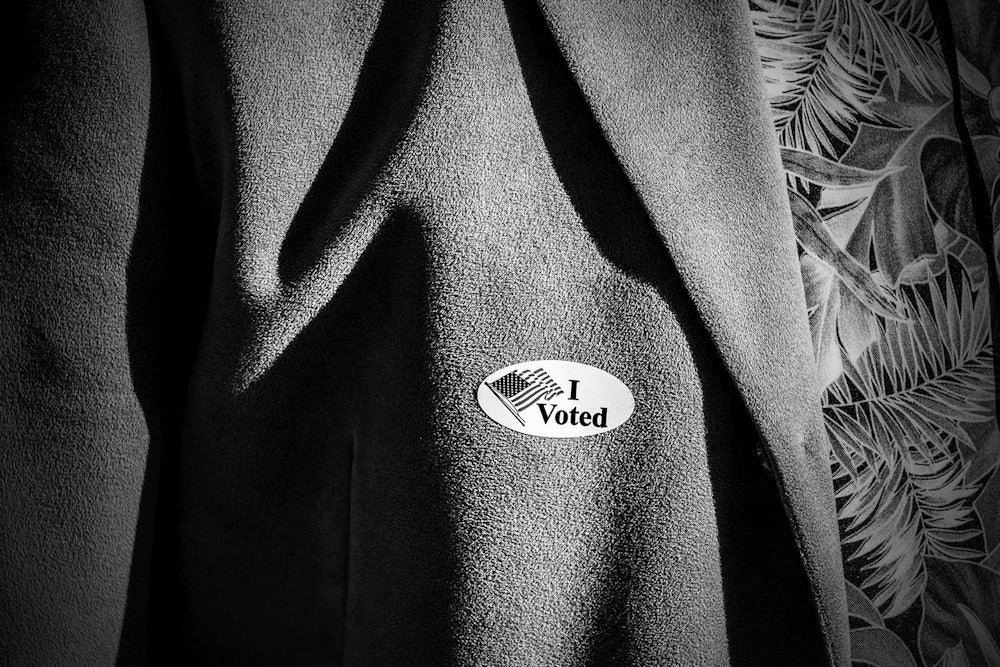In late September, a dozen new students from Venezuela, some of the more than 15,000 asylum seekers bused to New York City by Texas Governor Greg Abbott, appeared at my child’s elementary school. At the peak, as many as nine buses, carrying around 400 people, were arriving every day. New York tried to welcome these families. Compared with Abbott’s cynical ploy of banishing them, New York’s actions, it is tempting to say, veritably made the state a different country—a Republic of New York, decisively not united with the state of Texas.
But New Yorkers shouldn’t overstate our accomplishments, which did little to address the causes of migration. And before long, New York Mayor Eric Adams, a Democrat, said that the city’s practice of guaranteeing shelter “must be reassessed.” In this, his approach was in keeping with that of the Democratic Party establishment as a whole. At best, many Democratic leaders’ policies blunt the worst of a given problem while ultimately reinforcing existing regimes of power.
Our liberal democracy emphasizes the importance of elected representatives, the rights of individuals, and procedural justice. But in its founding, it excluded some people from becoming full citizens: slaves, women, undocumented immigrants, those unable to pay poll taxes or pass literacy tests. And by erecting obstacles to citizenship such as residency requirements, our government continues to effectively exclude those who lack means, such as the unhoused. In fact, the liberal representative part of our democracy has undermined our struggles to be truly multiracial. Our current system’s focus on individuals assumes a color-blind logic that fails to adequately redress the ways in which racism continues to inform our current practices and conditions. Even strengthening our electoral institutions—by fighting gerrymandering, for instance–will not suffice. Electing more racially diverse politicians has not always translated into better outcomes for historically marginalized communities, nor have these communities won enough say over the policies that govern their lives.
In clinging to our Enlightenment-based, liberal, representative canon, our efforts to “export democracy” have merely exported elections. True democracy redresses historical inequities, lends political power to the everyday constituents most affected by public policies, and shifts decision-making away from campaign donors, wealthy elites, and corporate interests. One avenue there lies in participatory practices, in which constituents themselves help to make certain policy decisions. Participatory democracy is not a betrayal of American democracy but is at its very roots. When the Framers wrote our Constitution, the Haudenosaunee Confederacy (called Iroquois by the French) already had working structures to address diverse views and collaboratively maintain resources for “the seventh generation.” After Benjamin Franklin invited Haudenosaunee leaders to the Continental Congress in 1776, the Framers adopted their federalist design and “bundle of arrows” metaphor, but not their participatory structures.
What might newer participatory democratic experiments entail? Where our winner-takes-all elections reward incumbencies and horse race–like polling numbers, participatory institutions focus on dialogue; they inspire learning and reflection. When implemented well, these experiments encourage deliberation rather than trolling; sometimes, they yield groundbreaking results.
One striking example comes from Ireland, where, since 2016, policymakers built upon a parliamentary system of proportional representation to enable more dialogue among constituents. In Tionól Saoránach, also known as We the Citizens assemblies, 99 constituents spent multiday meetings learning about a specific policy issue, hearing from experts and diverse advocacy groups, and deliberating over policy recommendations. A 2016–2017 citizens’ assembly led to an abortion referendum proposing to repeal a constitutional amendment from 1983 that had explicitly conferred a right to life to fetuses. Opinion polls suggested that it would be a close call, and news outlets portrayed Ireland as a bastion of Roman Catholic conservatism and emphasized its history of civil conflict. Yet the referendum passed by a landslide. The assemblies’ deliberative process—in which even advocacy groups deemed loathsome by their opponents had the chance to make their case—was likely pivotal to the referendum’s success. Participants departed from well-worn party lines, listening to real-life stories and exploring gray areas while fact-checking people’s accounts with obstetricians and lawyers. The process allowed participants to reframe the entire debate rather than simply dig in their heels on their preexisting positions—and this, in turn, helped the entire country to follow suit. Meanwhile, in the United States, where a majority of Americans have consistently supported abortion access, we got Dobbs.
Of course, even when constituents manage to overcome polarization, corporate and state interests can still block the policies that these constituents thoughtfully develop and can undermine democratic decision-making. In France, President Emmanuel Macron convened people from across the political spectrum for climate change assemblies; he also promised to forward their recommendations, “unfiltered,” to Parliament or referendum. But when the participants recommended a 4 percent green tax on company dividends, Macron reneged on his promise. Out of 149 measures proposed by the assembly participants, more than half were rejected outright; legislators dropped others, like taxes on heavily polluting vehicles, after receiving complaints from French manufacturers.
Such dynamics should feel familiar to Americans. After all, our government’s decisions over the last few decades reflect the preferences of wealthy individuals and business groups, not the wider public. Political scientists Martin Gilens and Benjamin I. Page analyzed 1,799 policy issues considered in Congress, comparing decisions to the preferences of the public and different interest groups; they concluded that the average American’s influence on public policy is “near-zero.”
A system that sidelines equity normalizes and profits off our racial hierarchy. It is no coincidence that so many of the exploitative practices we need to address democratically—foreclosures and predatory debts, for instance—developed first as ways of targeting specific, marginalized groups in the United States, such as African Americans and Native Americans. This history of excluding racialized groups is a feature, not a bug, in our current system. The scholar Keeanga-Yamahtta Taylor calls it “predatory inclusion”—the process by which members of a marginalized group are provided access to a good or service under conditions that threaten their ability to ever benefit from it.
At least in theory, a participatory experiment might still fulfill conservative policy goals, especially when extra-institutional grassroots power remains limited and other governmental institutions remain unchanged. Certainly participatory initiatives need safeguards to resist right-wing authoritarian forces. These may look simple but are not easy. Good facilitation and an explicit articulation of the ultimate political project at hand are essential.
To achieve a multiracial democratic United States in 2050, we must examine how we got into this predicament in the first place—how we built our country by inscribing a constitutional formula stating that, for the purposes of congressional representation, Black slaves counted as three-fifths of a person. This isn’t a question of fractions or whole numbers. Human beings who did not count as human were used to enhance the South’s congressional numbers, and to add weight to the entire system that kept them in place. What other decidedly undemocratic elements remain in our system of government? We need more than a stronger civil society and a more deliberative public sphere; we need democracy not as a set of laws and institutions alone, but as a set of practices to be realized and sustained.






